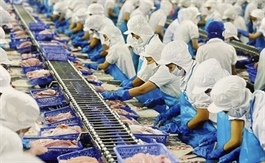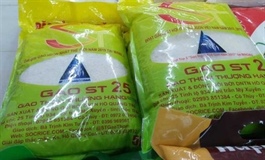Vietnamese rice exports poised to thrive despite India’s eased export policy: insider
Vietnamese rice exports poised to thrive despite India’s eased export policy: insider
Vietnamese rice exports are expected to continue their upward climb despite India removing its floor price for basmati rice exports, according to Nguyen Ngoc Nam, chairman of the Vietnam Food Association.

Sacks of freshly harvested Vietnamese rice in a field in the Mekong Delta of Vietnam. Photo: Chi Quoc / Tuoi Tre |
Nam confirmed to Tuoi Tre (Youth) newspaper on Tuesday that India’s loosening of rice export regulations, particularly the removal of its floor price for basmati rice shipments, will not impact Vietnamese rice.
“Whether India bans or resumes exporting rice, it will not affect our market because the quality segment of Indian rice differs from that of Vietnam and Thailand,” Nam explained.
In fact, the industry is likely to grow as the Philippines, Indonesia, and Malaysia all seem poised to up their demand for rice compared to initial projections.
These three countries, along with China, make Vietnam’s top rice export markets.
According to Nam, Vietnamese rice exports from January to August reached over 6.15 million metric tons, generating US$3.85 billion in revenue.
These numbers reflect a 5.8-percent increase in volume and a 21.7-percent rise in revenue compared to the same period in 2023.
While the volume of rice exports saw a modest increase, turnover surged due to a 14.8-percent rise in average export prices which now sit at $625 per metric ton.
The Ministry of Agriculture and Rural Development projects rice exports in 2024 at approximately 7.6 million metric tons.
“With only four months left in the year, we’ve already exported 6.15 million metric tons of our estimated 7.6 million tons,” Nam said.
“This leaves about 1.45 million metric tons still to be exported [this year] and means we will be able to ensure that Vietnamese rice is sold at good prices for our farmers."
A rice exporter in Can Tho City, located in the Mekong Delta region, which accounts for over 50 percent of Vietnam’s rice production and 90 percent of its rice exports, echoed Nam’s sentiment.
“Vietnam sells high-quality rice at very competitive prices,” he added.
“In international bidding, the Vietnamese grain consistently performs well.
“To thrive, especially with market fluctuations, Vietnam must diversify its rice products to open more avenues for export.”




























